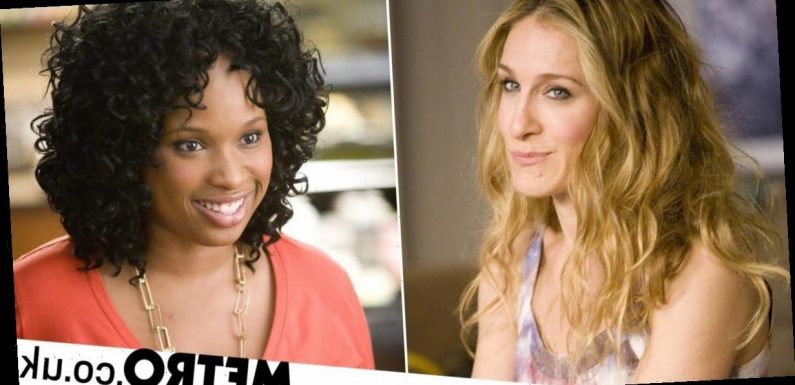
News of the Sex And The City (SATC) reboot has been met with mixed reviews and a resounding ‘WTF’ due to the confirmation that Kim Cattrall will not be reprising her role as Samantha Jones.
Admittedly, I’m one of those longtime SATC fans struggling to get on-board with what the bars of Manhattan will look like without a cocktail-sipping Samantha recounting her outrageous sex stories to Carrie Bradshaw (Sarah Jessica Parker), Miranda Hobbs (Cynthia Nixon) and Charlotte York Goldenblatt (Kristin Davis).
Seriously, WTF.
In her absence, producers of the reboot, And Just Like That…, are said to be plotting ways to make the spin-off more diverse following historic criticism that the original series was too whitewashed.
Caitlyn Jenner, who is transgender, is one of the stars who is reportedly favourite to make a cameo, while Jennifer Hudson has already thrown her hat in the ring, admitting that she’d love to reprise her role as Louise from St Louis.
You’ll remember J-Hud played Carrie’s loveable assistant in the first Sex And The City movie, which was much better received than the sequel-that-shall-not-be-named.
Louise was a sweet character, a pillar of support for Carrie as the writer got her life and career back on track after being humiliated when Mr Big stood her up on their wedding day.
However, let’s face it, Louise was also the broke assistant with Carrie becoming her ‘white saviour’, elevating her employee when she gifted her the Louis Vuitton bag she’d always longed for but couldn’t afford.
If you’re unfamiliar with the tired Hollywood trope of the ‘white saviour’, see The Blind Side and Green Book, which do it well.
This trope probably wouldn’t be as glaringly painful had diversity been implemented in SATC from season one in 1998.
Only, it wasn’t, and it felt cheap using Louise as the token Black character back then.
Similarly, Lily – who was Asian – was adopted by Charlotte in the final episode of season six and Miranda’s boyfriend Robert, the dashing doctor who was the first Black man any of the women properly dated, didn’t exist until the final season either.
The problem is that these diverse characters came too late in the day and therefore seemed unnatural, almost like an afterthought or checklist.
It means that any moves to diversify the series now aren’t going to seem genuine.
https://www.instagram.com/p/CJ4c3MDpU1f/
Sure, it’s wild that SATC took years to create regular roles for people of colour despite being based in New York, one of the most multicultural cities in the world, and yes, it’s just as crazy that Friends didn’t have a recurring Black character until season nine.
The thing is with these iconic sitcoms is that while they may be problematic in their own ways, the old adage rings true: If it ain’t broke, don’t fix it.
Instead, turn the page and start afresh.
Why not create brand new shows that get it right from the jump and would in turn give rising talent an opportunity to shine in a new sitcom that could become the next SATC, for example.
HBO made the smart move of partnering with Issa Rae on Insecure, a comedy drama that follows the lives of primarily young Black people trying to figure out love, relationships and careers, and it worked as Insecure has become an Emmy-nominated series.
There are also calls for the sitcom Girlfriends, starring Tracee Ellis Ross and described as the Black version of SATC, to be rebooted thanks to renewed interest after it arrived on Netflix.
Rather than clumsily throw in diverse characters where they wouldn’t previously have existed in SATC, efforts would be better spent on creating new shows or giving space to existing ones that do get it right from the start.
This doesn’t have to extend to exclusively Black shows either, just sitcoms with good intentions of diversity in the first writers’ room.
If And Just Like That… is an attempt to make right the wrongs of the original Sex And The City series, they needn’t bother.
SATC works just fine having four sassy white women strutting around Manhattan and dating who they want to date without an ill-executed PC moment.
This is not to say that SATC shouldn’t attempt to be inclusive at all, but it needs to be natural.
Jennifer obviously wants to return to the franchise and good for her. The only request this SATC fan has is that she returns elevated, in her own right and without a white saviour.
Source: Read Full Article

